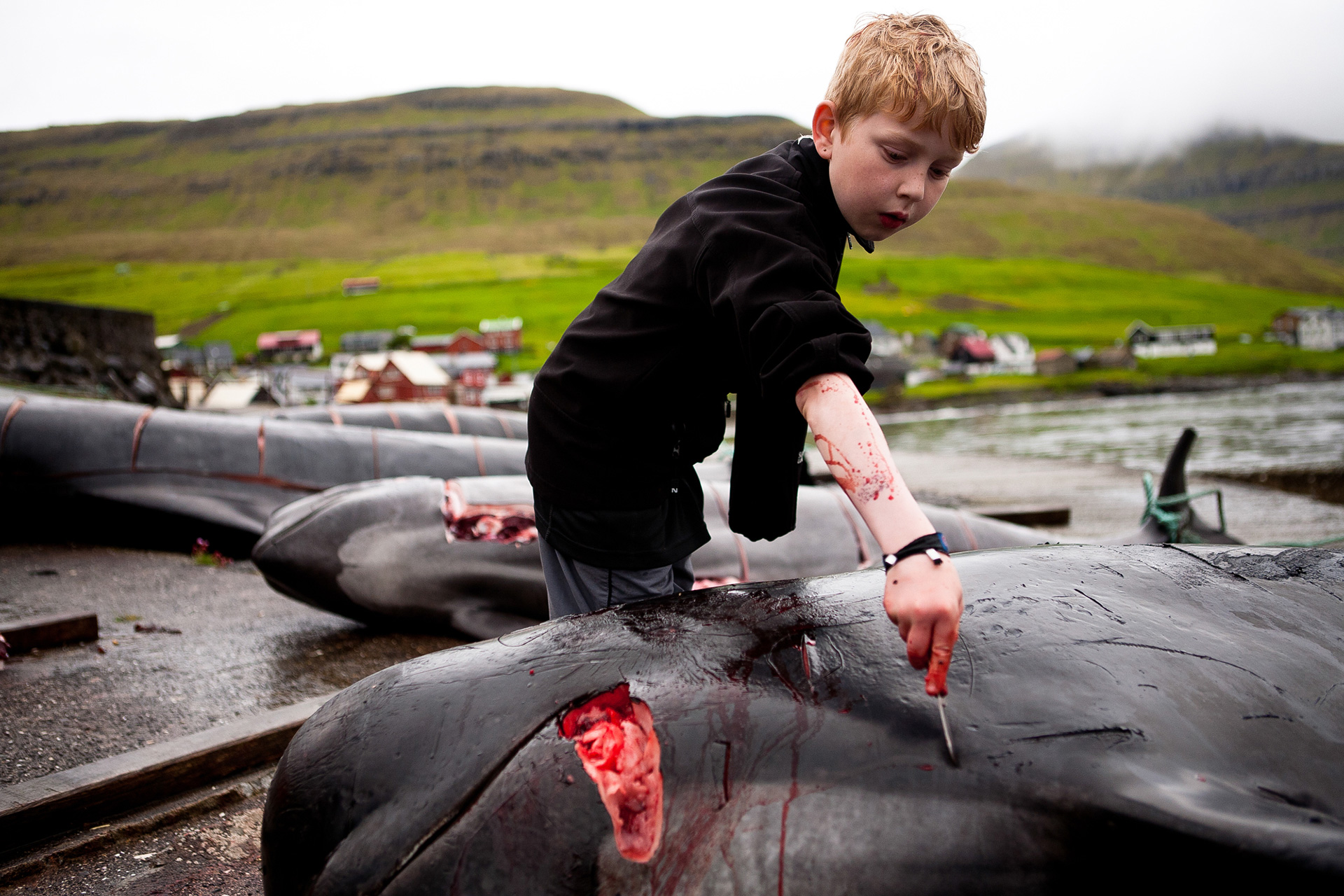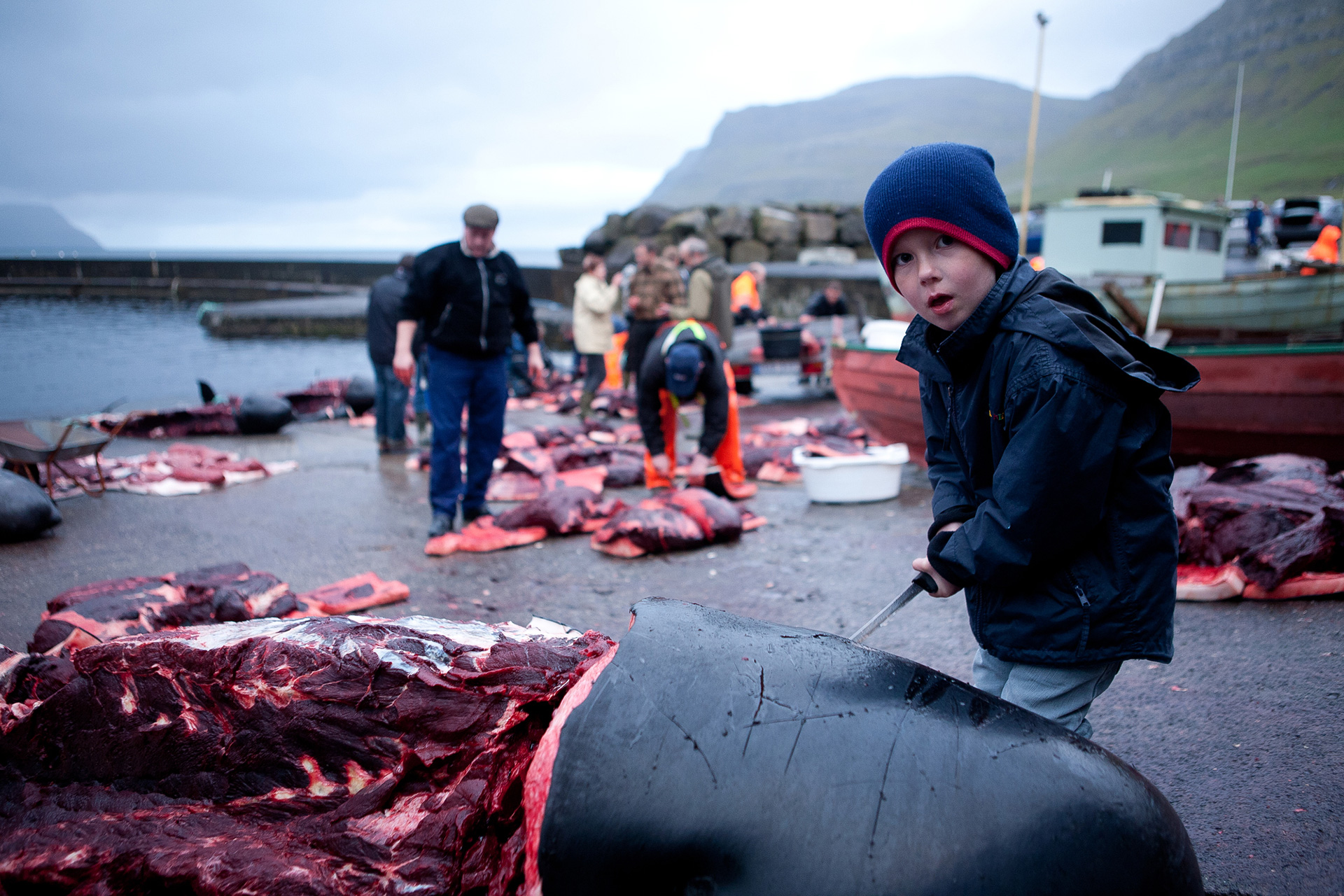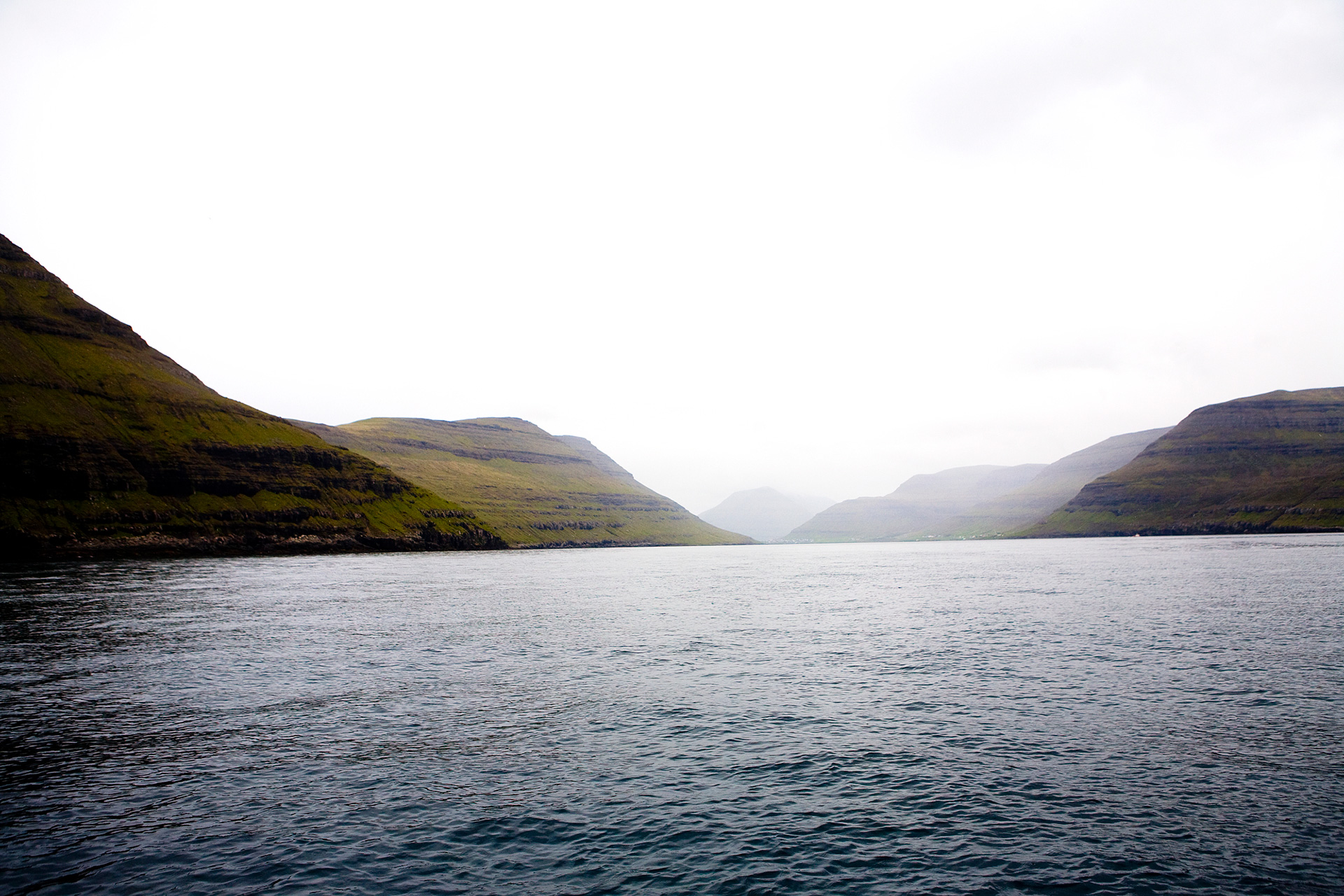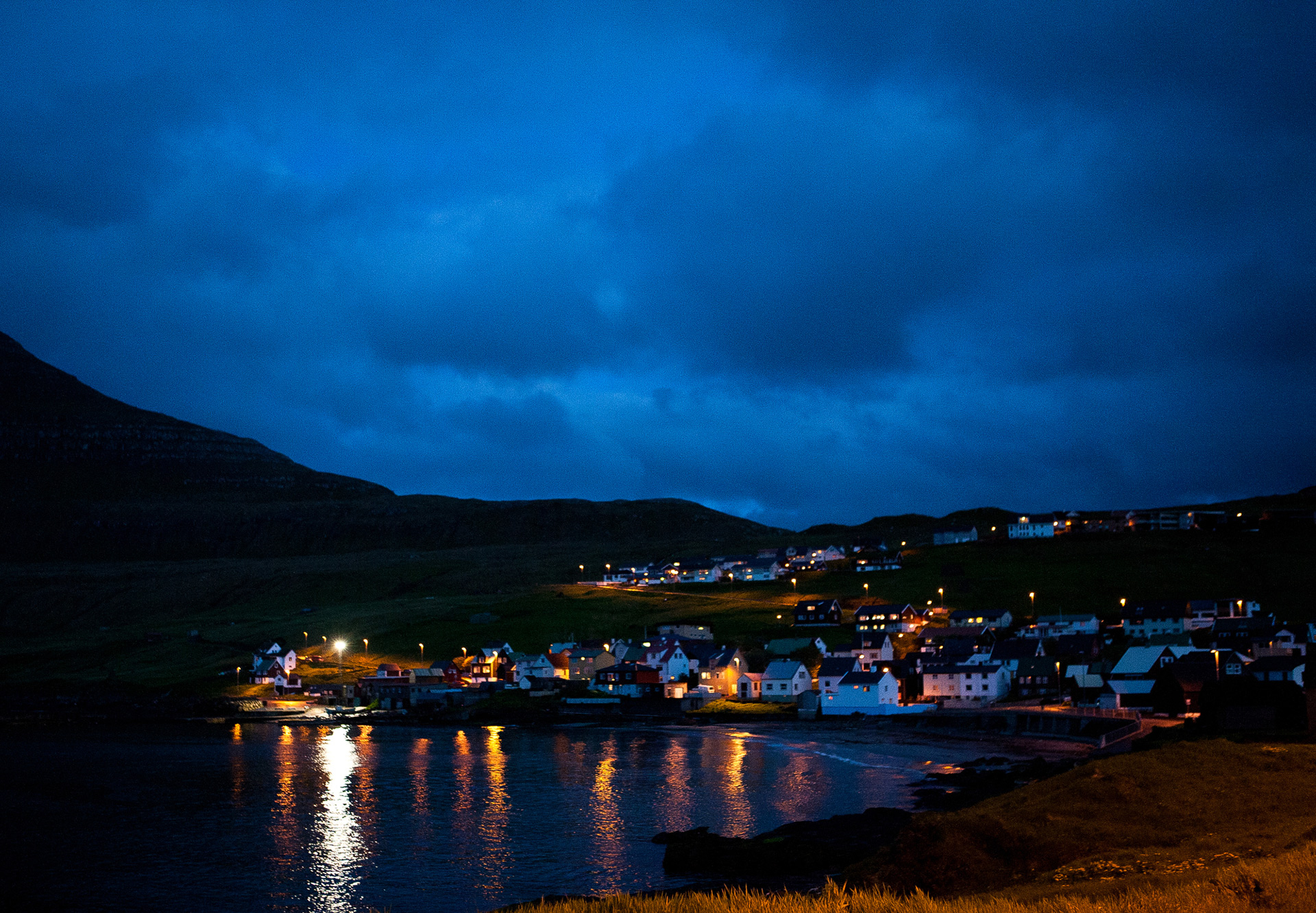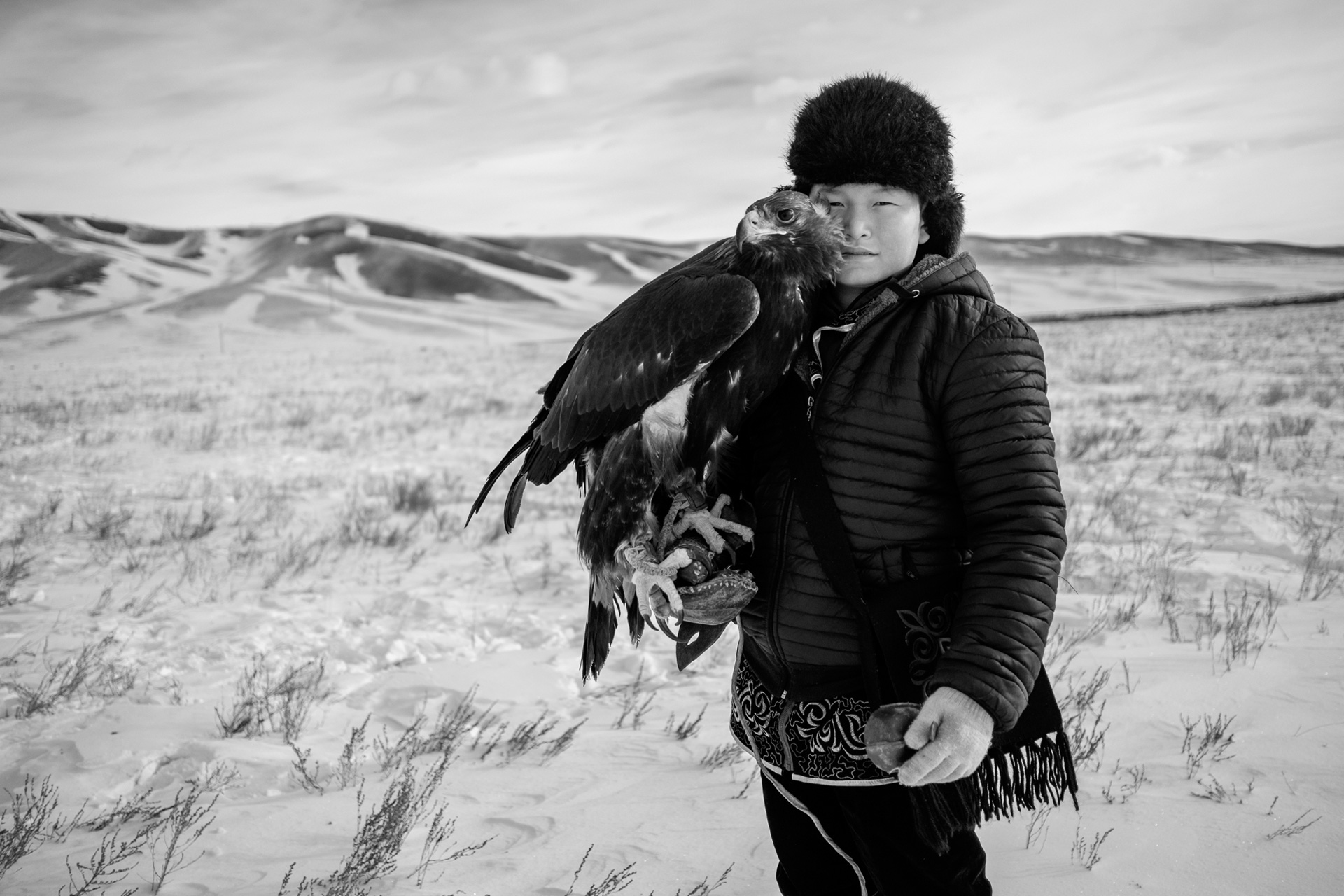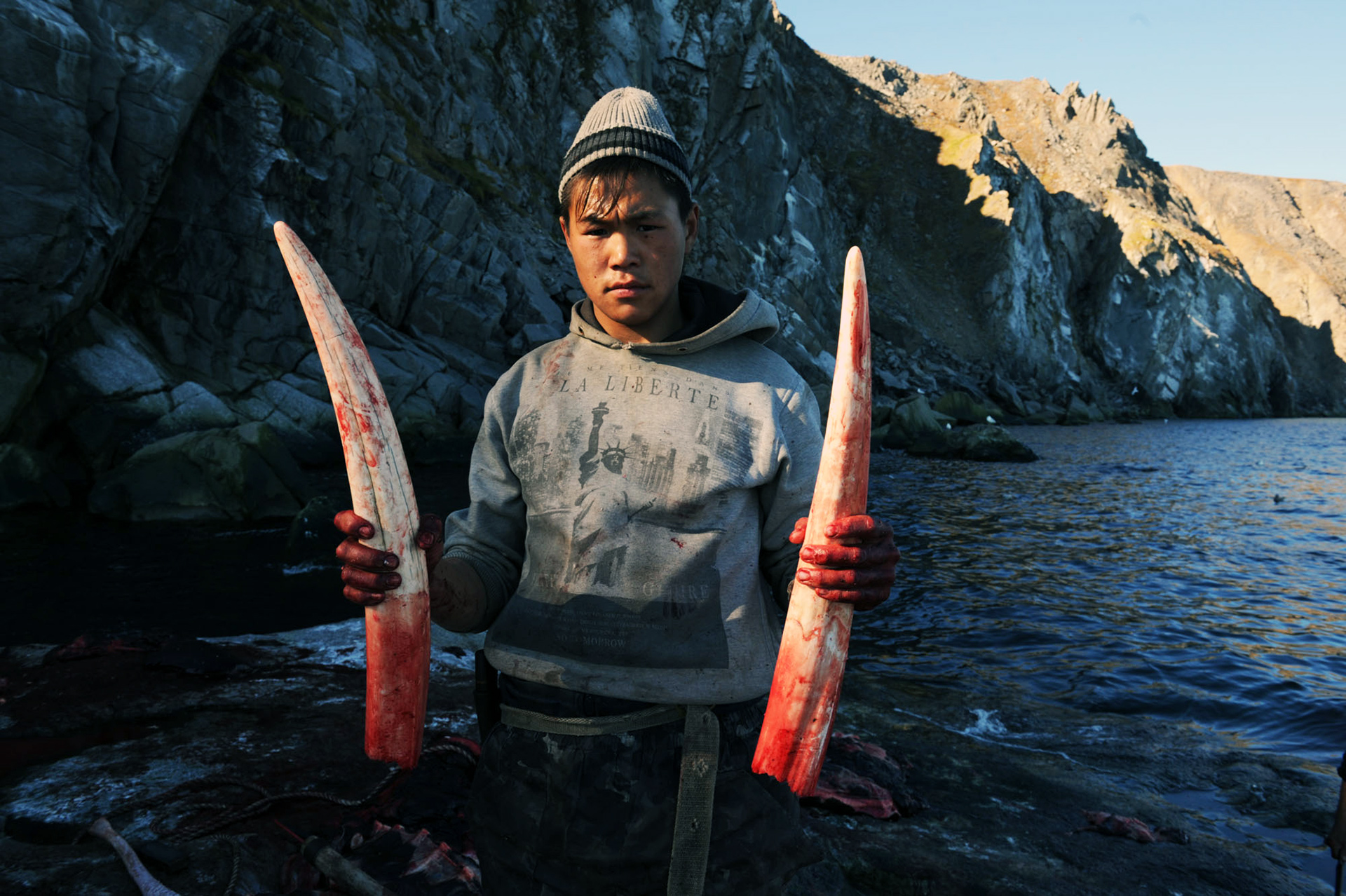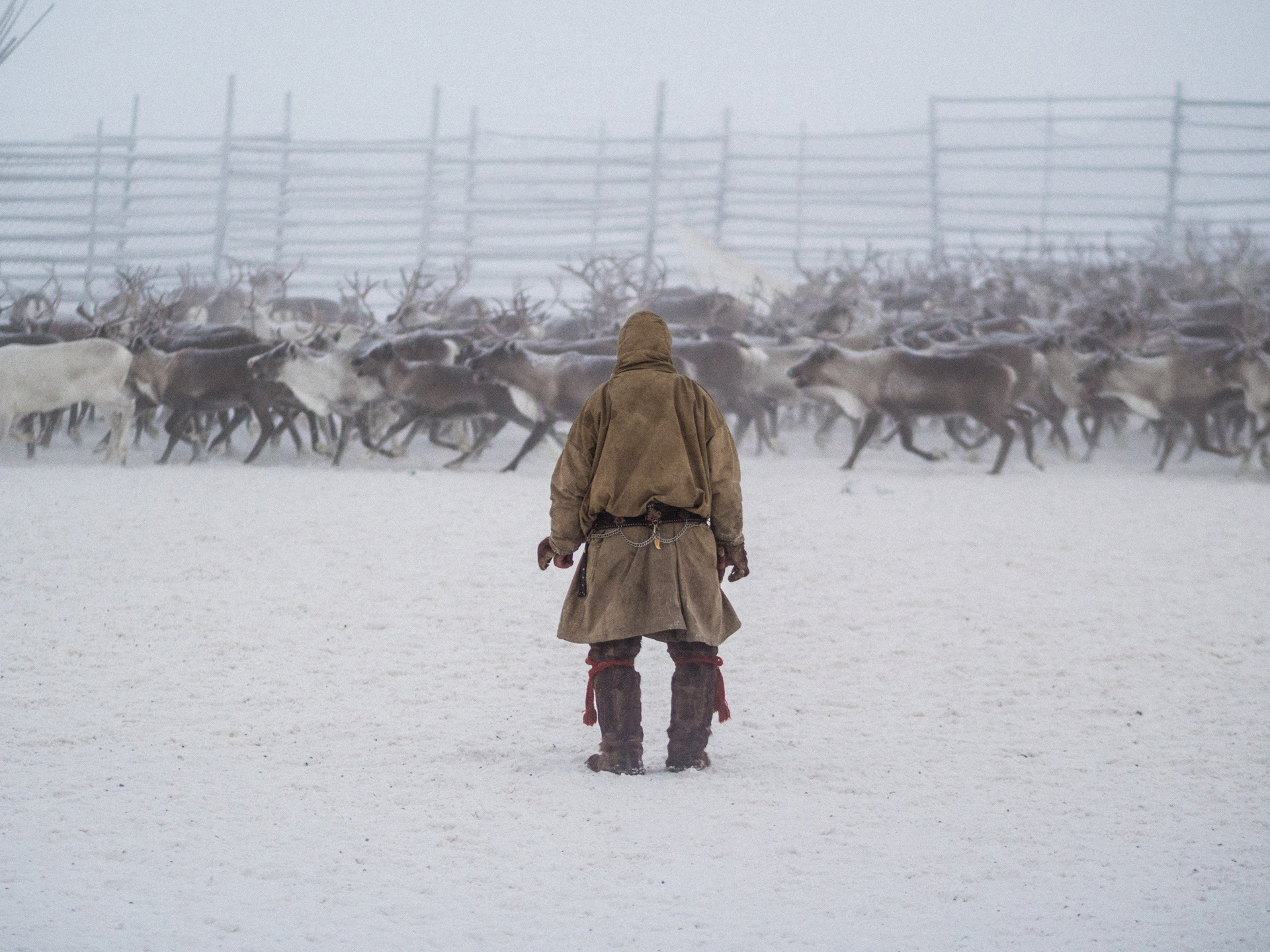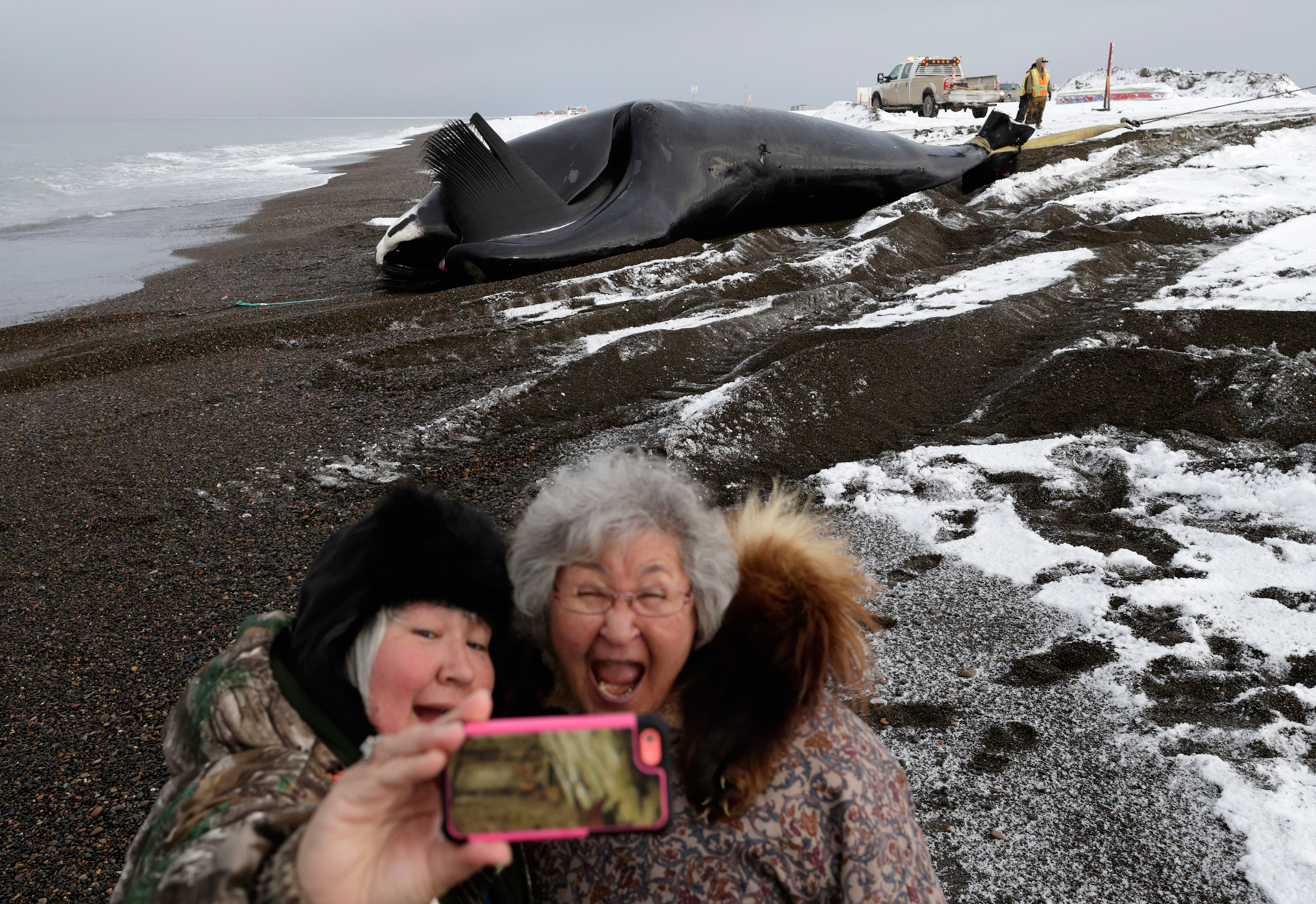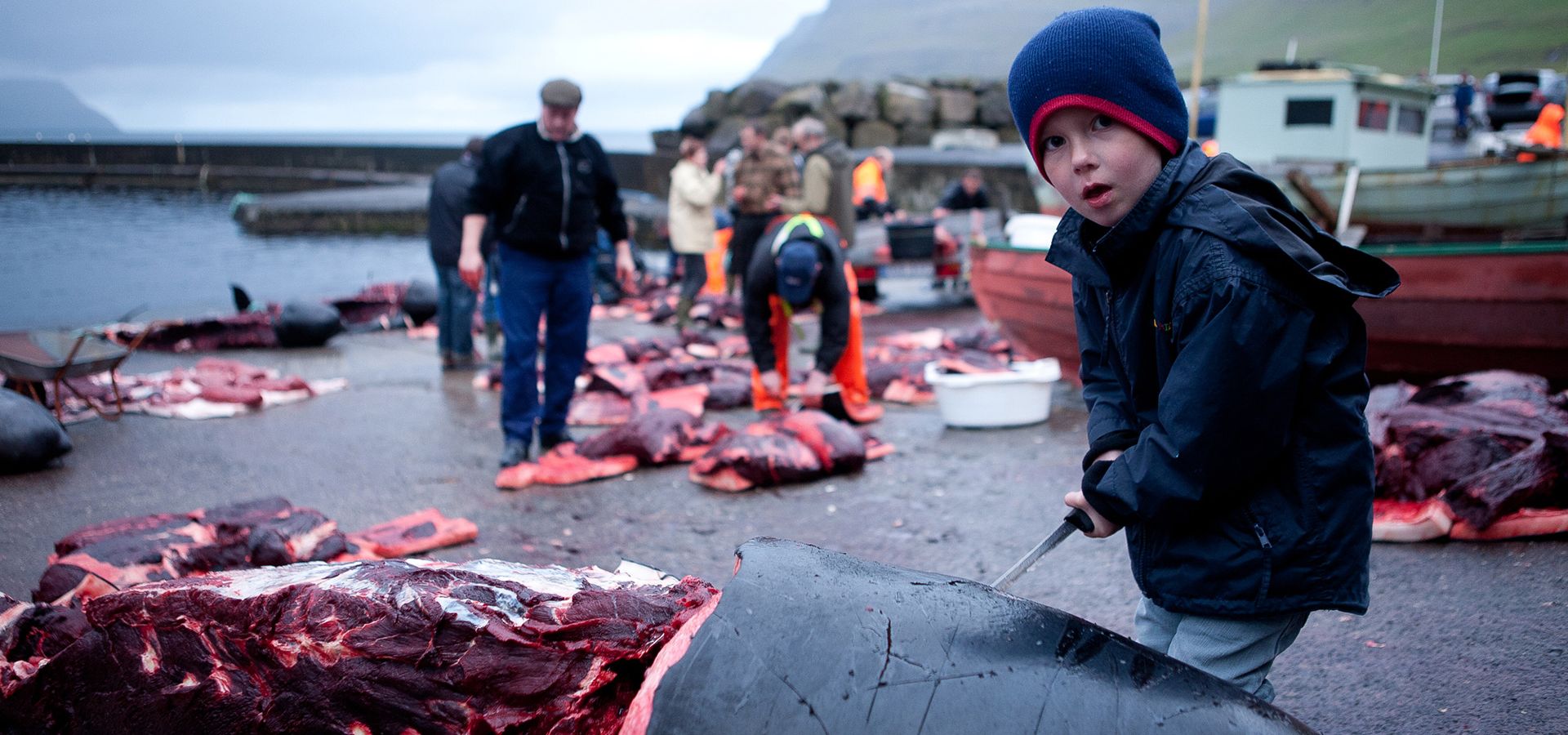
Scarlet Shore: Whale Hunting on the Faroe Islands
The Faroe Islands are an autonomous region of Denmark. The region consists of eighteen volcanic islands located between Iceland and Norway. About 50 thousand people live there permanently, but each year more and more tourists come by, looking for rugged landscapes and northern lights. Besides landscapes, the Faroe Islands are known for their long-standing whale hunting tradition — it’s called grindadrap. First mentioned in the Sheep Letter of 1298, the tradition dates back to the times when the islands were inhabited by the Vikings and their descendants. For centuries, grindadrap has remained an almost only way for them to survive on the isolated islands.
In 1948, the whale hunting rules were included in the official regulations. Since that time, the government of the Faroe Islands makes sure that everyone follows the rules. The Faroese drive a group of pilot whales, also known as black dolphins, to the shallows, and then kill them by cutting the animals’ spinal cord. Grindadrap can only take place when the sea is calm, when there are at least 12 boats available, and when a group of whales swims near one of the 23 beaches where hunting is allowed.
Today, grindadrap is a hugely controversial topic. In the European Union, there are certain laws that prohibit commercial whaling and significantly restrict non-commercial fishing (perhaps, the desire to preserve whaling is one of the reasons why the Faroe Islands are still not a part of the EU). Animal rights activists are convinced that there is no place for whale hunting in a civilized society.
The Faroese, on the other hand, say that pilot whales are not endangered. However, the last population estimate was made in 1989 when the International Whaling Commission counted 780,000 whales worldwide. It is hard to say how many pilot whales are out there now. Experts believe, that about 100, 000 whales inhabit the seas near the Faroe Islands. With that in mind, catching and killing an average of 670 whales per year can hardly damage the population.

American photojournalist and food photographer. Lives in Kansas City. Specializes in photostories, travel photography, and agriculture.
— I started photography as a preteen, mostly taking photos of my sisters around our farm in the Ozarks of Missouri. Later on, I moved to Denmark and entered the Danish School of Media and Journalism. There, I met a Faroese student, Martin, who told me about his home country and its culture. We had a 3-week break for a photo project, and I decided to go to the Faroe Islands and photograph their landscapes and traditions.
There was one tradition that interested me the most. I knew that the Faroese go on a whale hunt — grindadrap — and hoped to document it. But the problem is that there is no actual date for having a whale hunt — it is such a gamble. So I planned my entire photo project around just documenting different aspects of Faroese culture. One Faroese person told me that back in the days the islands were nicknamed “the land of maybe”. Considering my uncertain situation, I thought it was a good name for that photo project.
But I was incredibly lucky — the whale hunt happened in the short 2 weeks I was there.
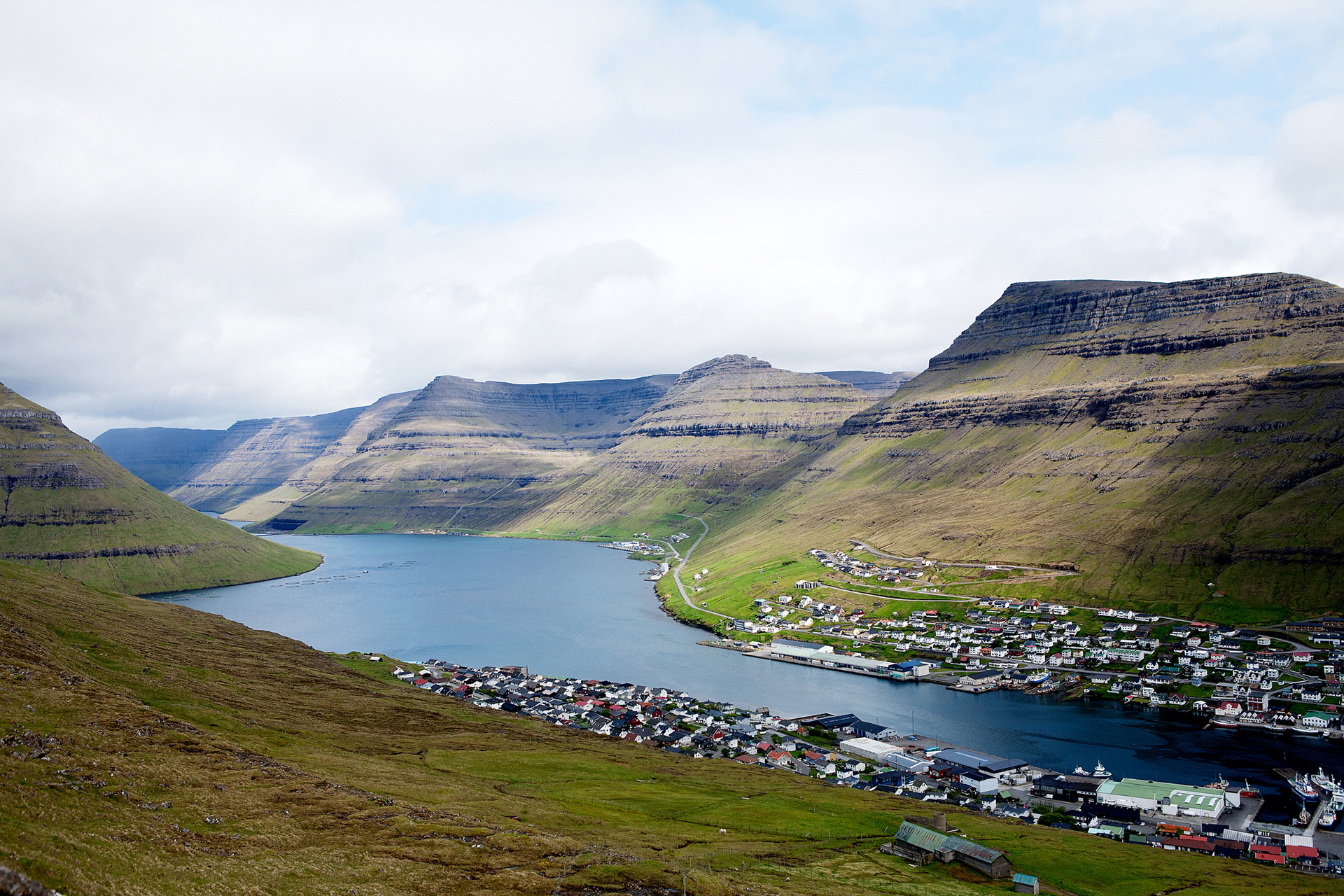
It all starts with someone spotting a school of pilot whales and sending a signal to a person called “grindaformenn”. He then decides if it is possible to go on a hunt — grindadrap only takes place under certain circumstances, which include safe beaches and suitable water depth. If all the conditions are met, grindaformenn will call out to people in the village or town, and they will go out on boats to herd the pilot whales to the shore.
There are no official rules that prohibit anyone from taking part in the hunt. Yet, in reality, there are some limitations. The hunt involves severing the spinal cord of the whale, which can be difficult physically, so hunters must be strong enough to do this. Otherwise, the whales will be stressed out for too long or will die violently, which no one wants.
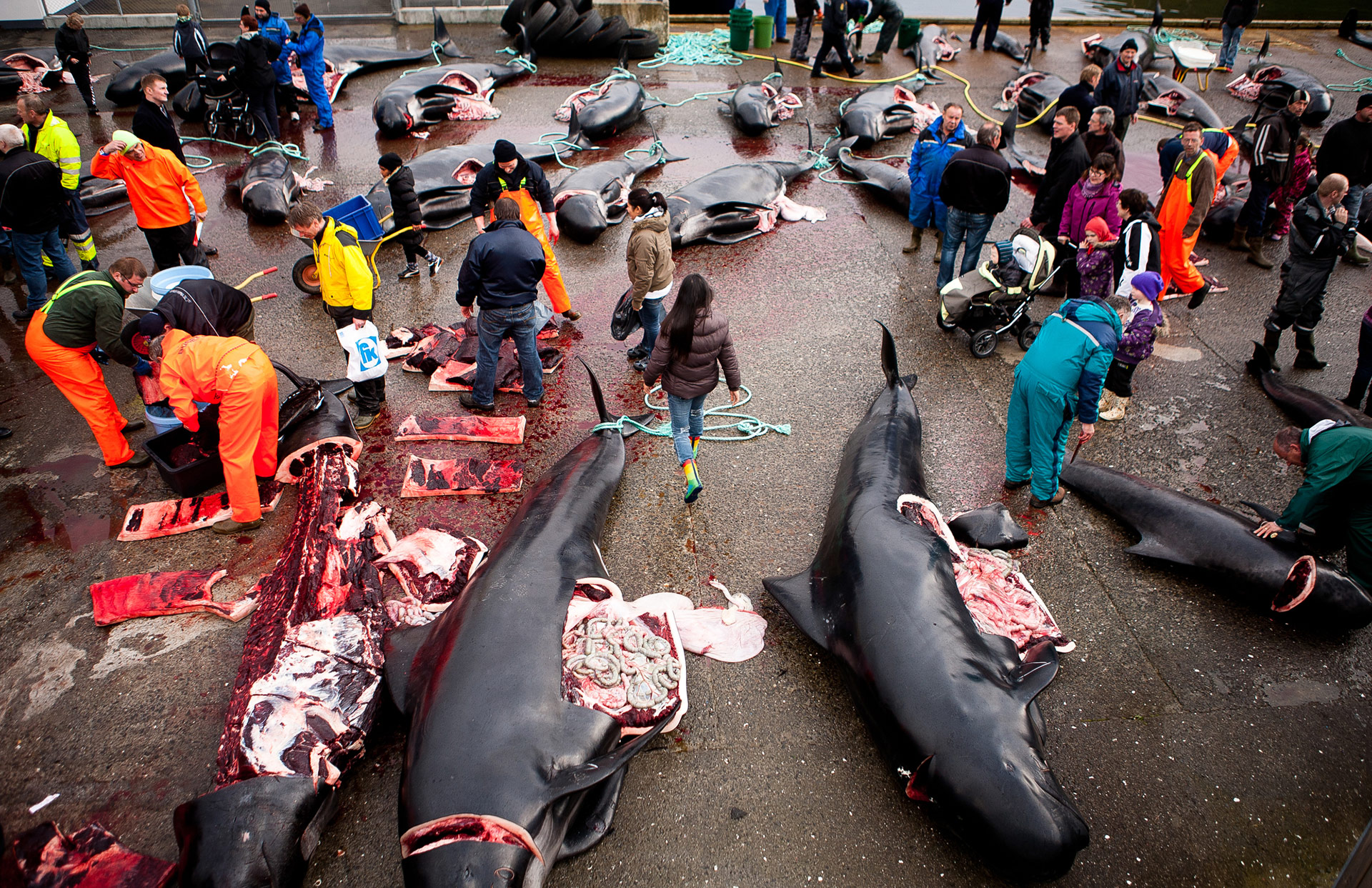
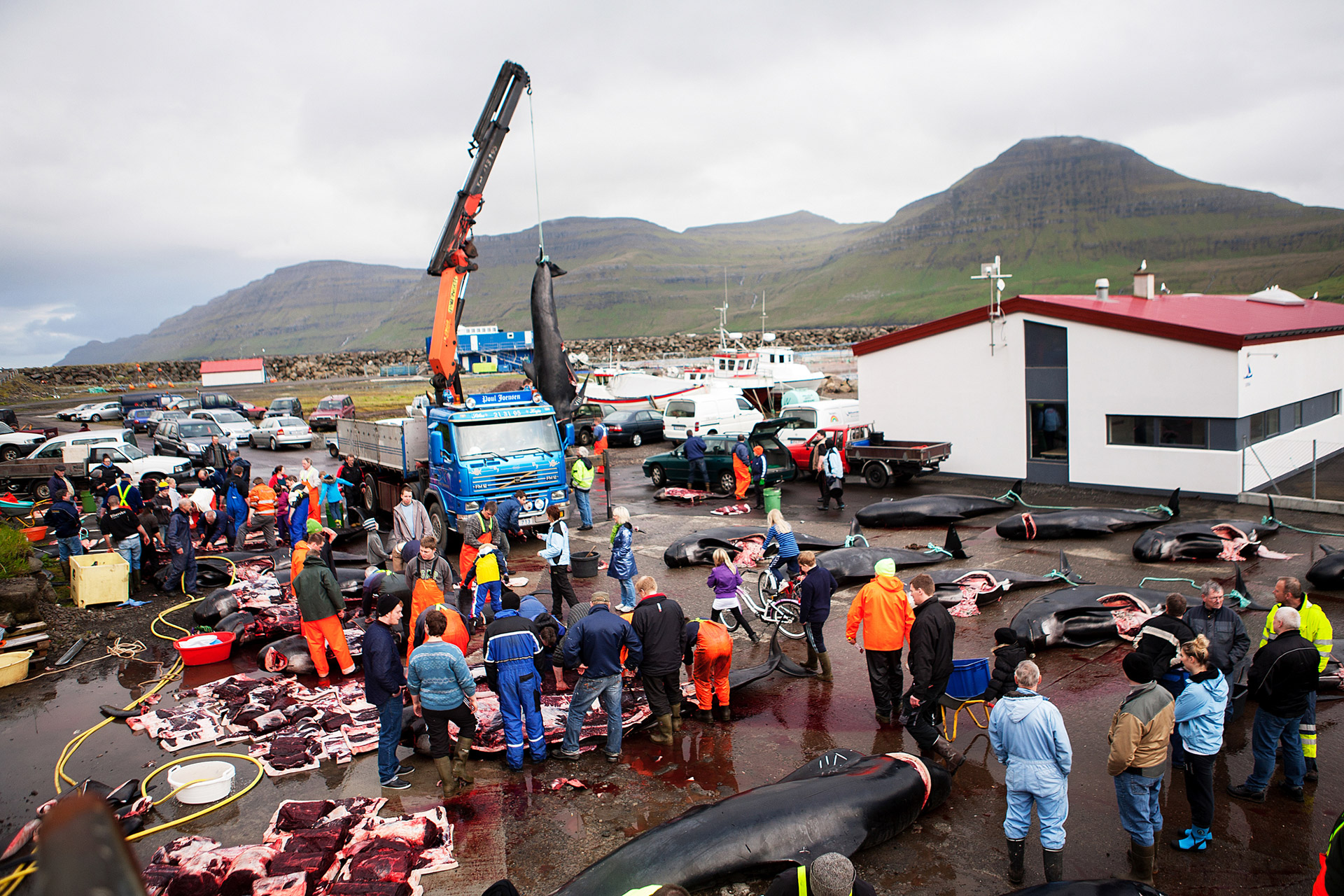
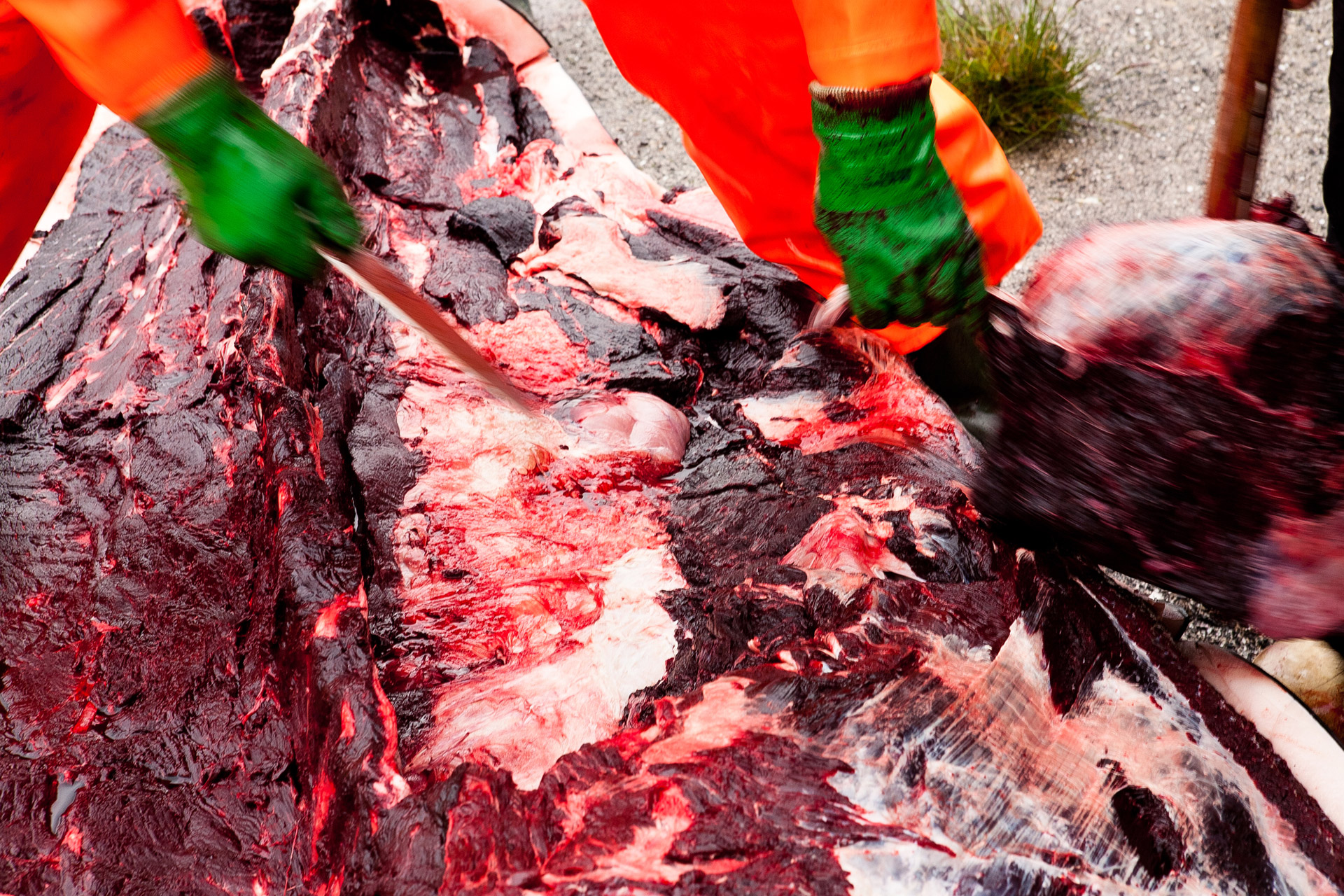
The number of killed whales ranges from 30 to 200. On the day I witnessed it, between 100-150 whales were slaughtered. The actual hunt looks very bloody, but it happens fast — it only takes about 20 minutes.
After the whales are brought onto the beach, everyone in the village gathers to butcher them. Almost every member of the community receives their portion of whale meat. The grindaformenn and the hunters get the biggest cut. They are followed by those, who helped butcher the whales, and the rest is divided among poor and elderly people in the village. Pregnant women and kids are not recommended to consume meat since it contains high levels of mercury.
People cook meat using their national recipes, and the remains of carcasses are returned to the ocean for other fish to feed on.
The hunt looks very bloody, but it happens fast — it only takes about 20 minutes.
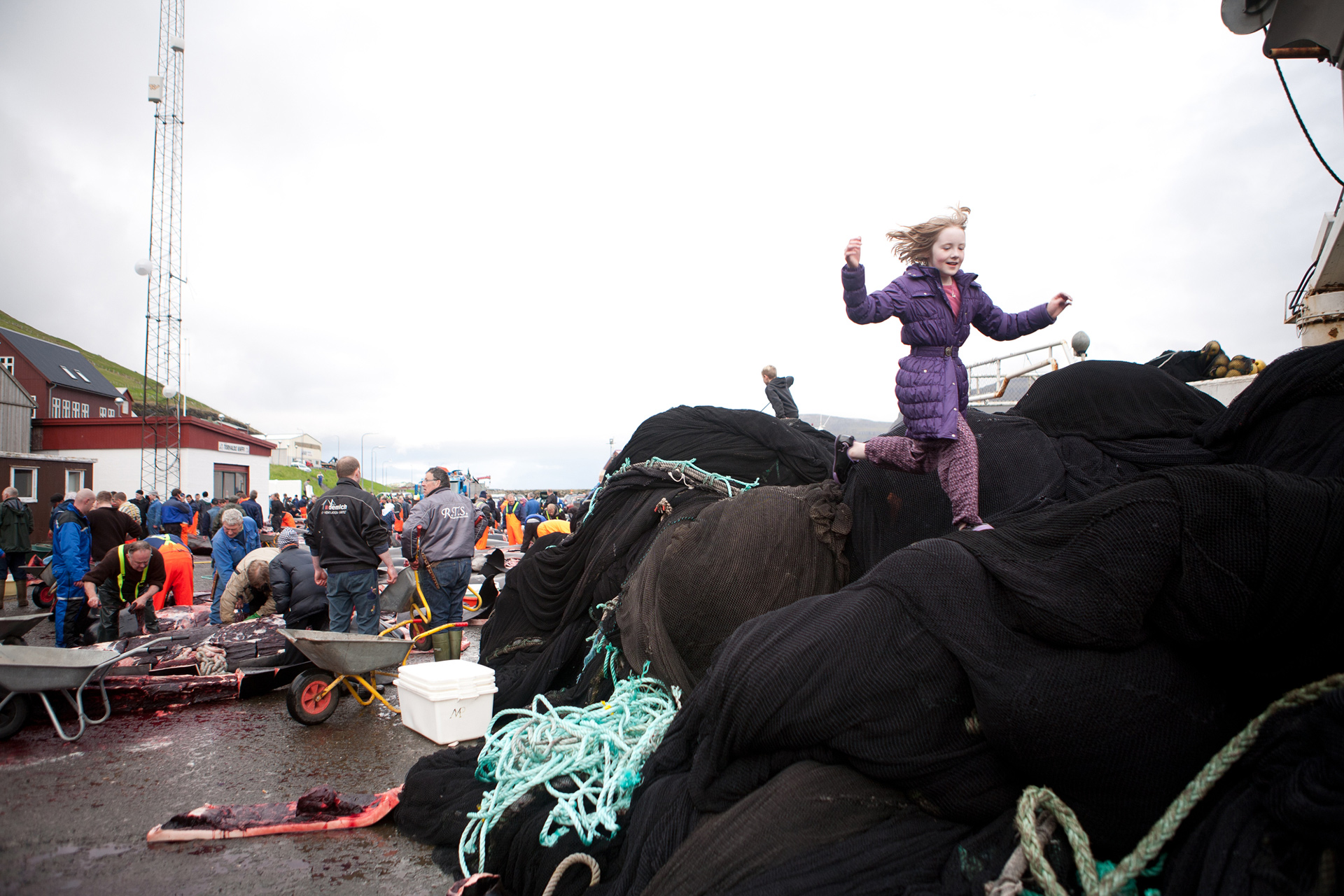
The Faroese are very passionate about their tradition. It’s something they want to pass onto their children. Pilot whales aren’t endangered species. Besides, the Faroese don’t kill more than 1,000 whales a year. They don’t do it for fun or for sale, whale hunting is just their way to catch food.
The Faroese grindadrap is nothing similar to commercial whaling, which is practiced in Japan. People here don’t slaughter whales on a commercial scale and never sell whales’ meat. They gather together and go hunting, as their ancestors didn’t hundreds of years ago. The most astonishing part is the sense of community surrounding the whale hunt. People come to the shore, support one another, share food, and withstand the power of nature. I think we see so much less of this group effort lately in our communities.
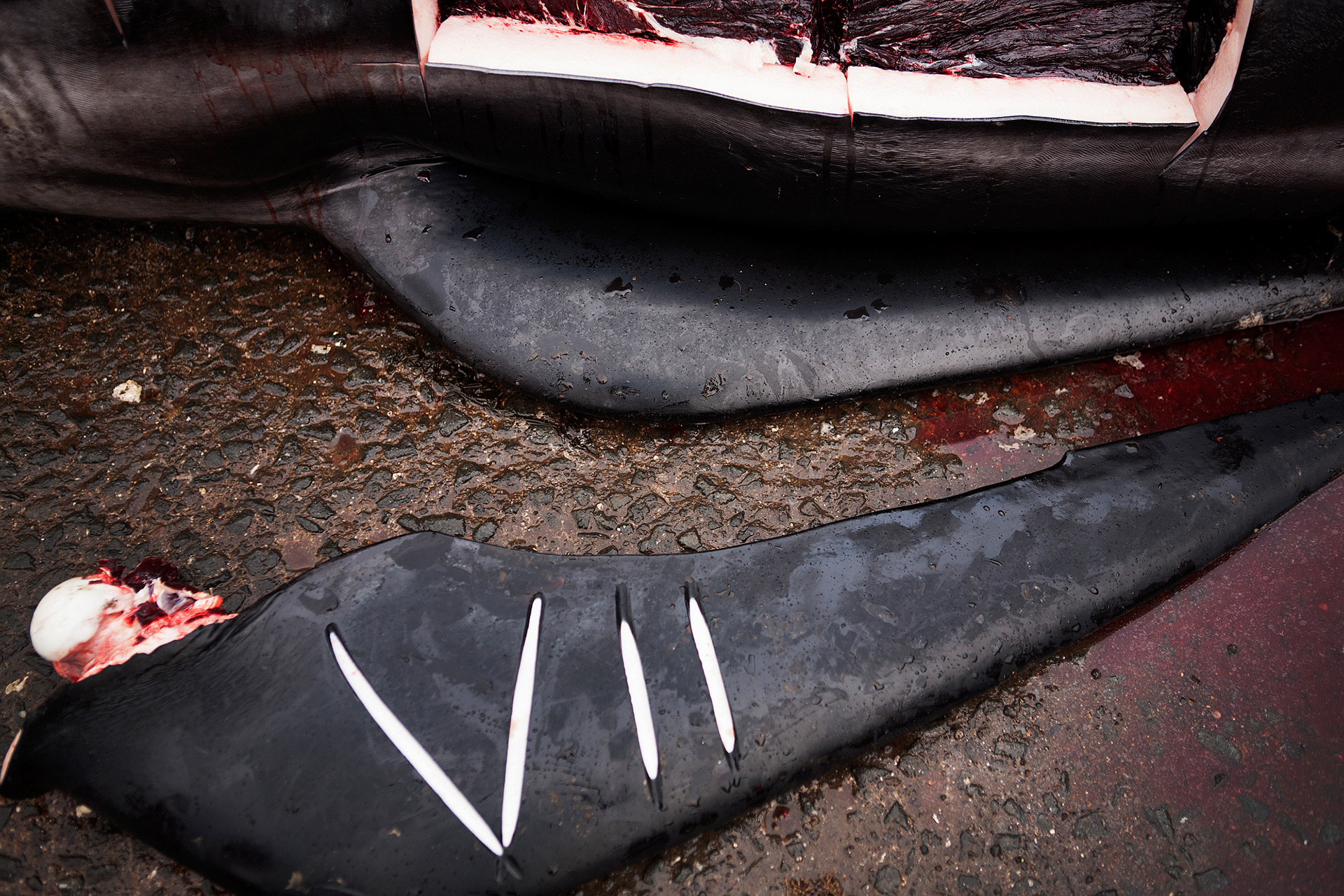
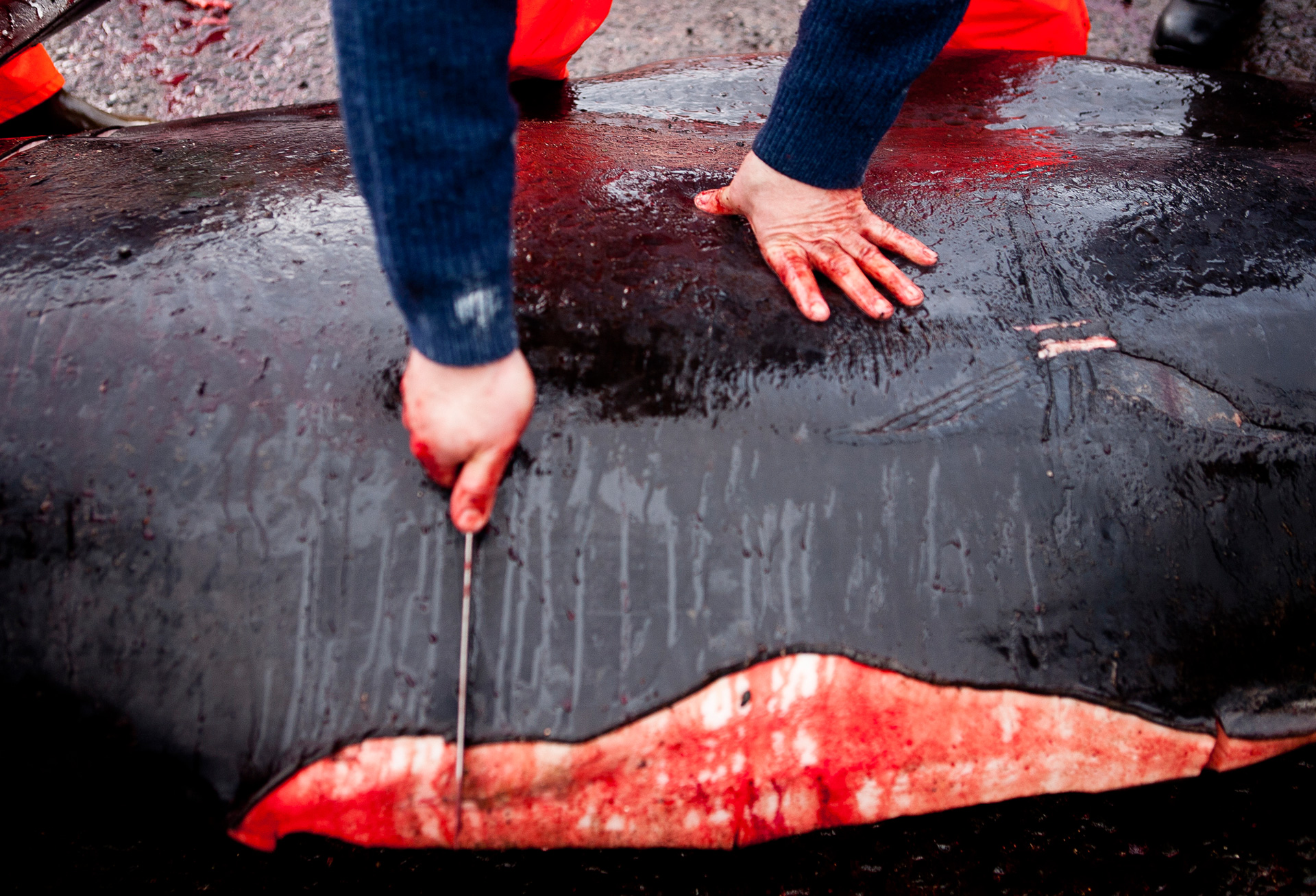
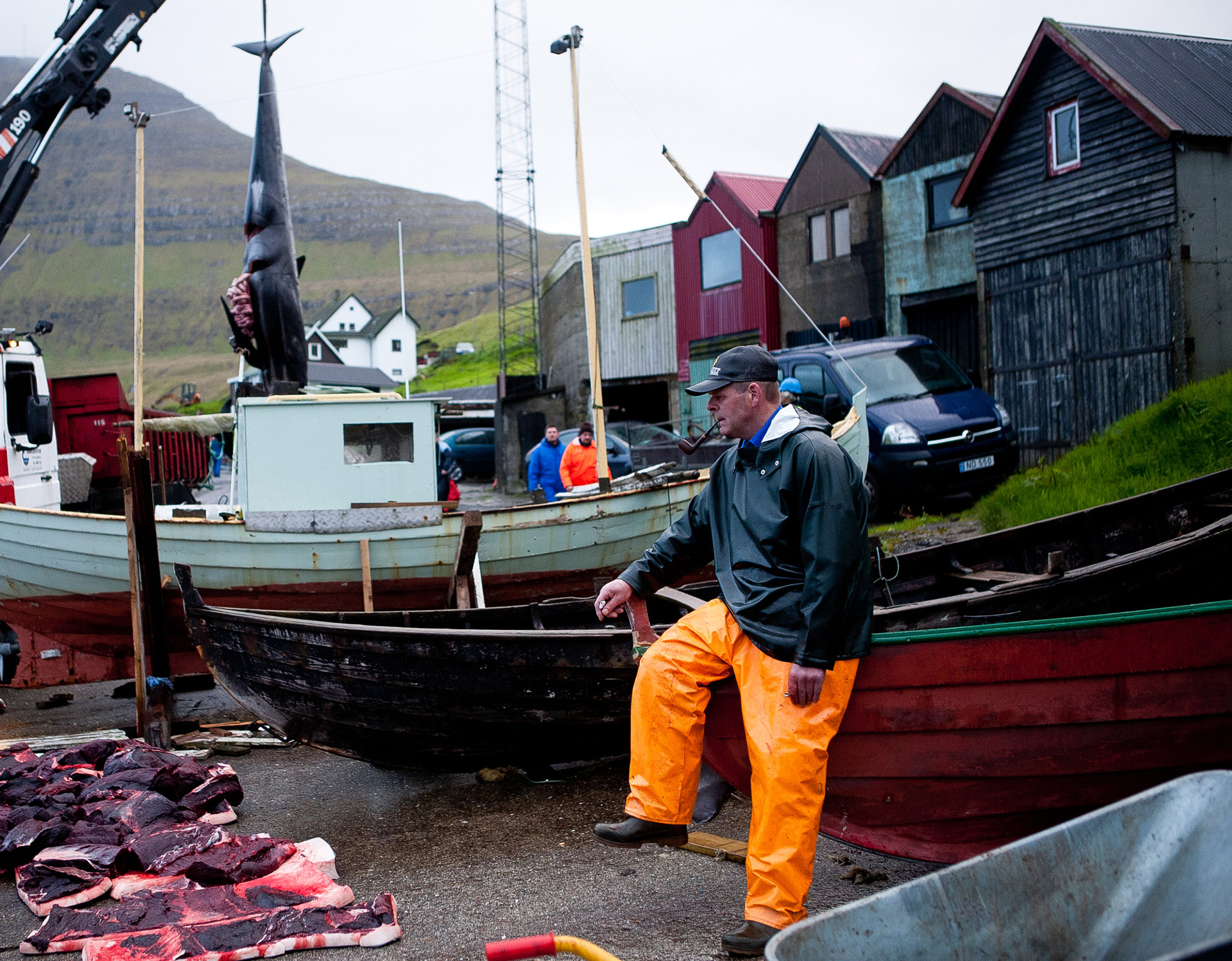
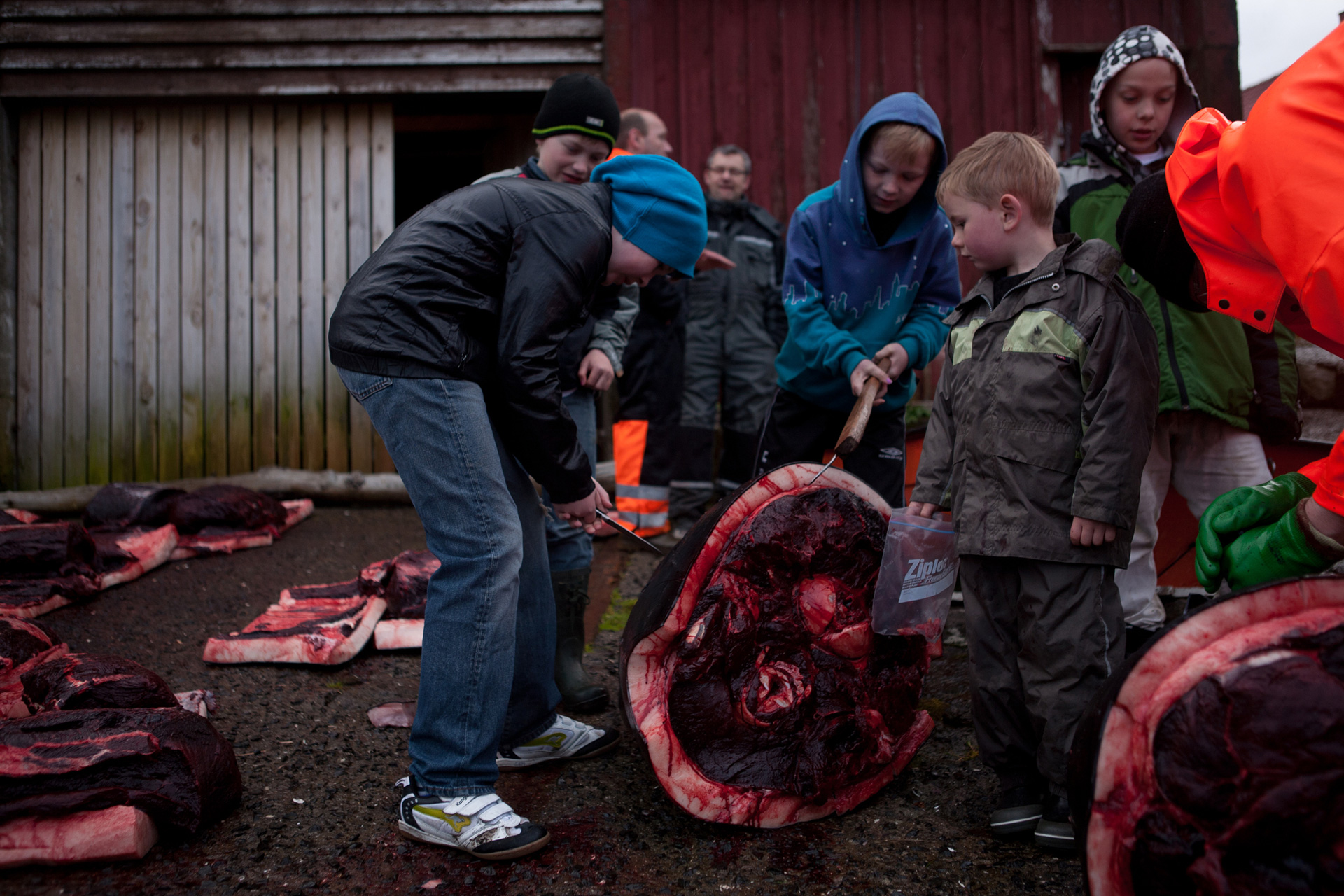
I guess the controversy around grindadrap is caused by its image, which is bloody and cruel. But that’s what any slaughtering actually looks like: I’ve seen cows, chickens, turkeys, and other animals being butchered, and there is nothing nice about the process. Most of the animals we eat die behind closed doors, but it looks no different than the death of the pilot whales at the hands of the Faroese — someone just cleans up the mess so we can stay blissfully ignorant. We don’t want to know what it takes to bring a steak on our plates. But as soon as we see ocean water turning red and bowels lying on the ground, we start resenting how inhumane this is.
Despite the accusations, we must admit that this is an honest hunt. The Faroese do not pretend that the meat on their plates comes out of nowhere. They hunt whales in their natural habitat, kill them fast and painlessly, and share the catch afterward. If there is a decent way to eat an animal, this must be it.
